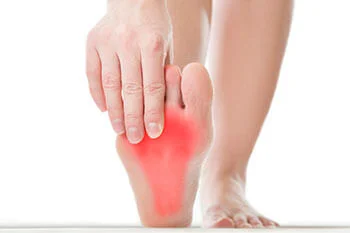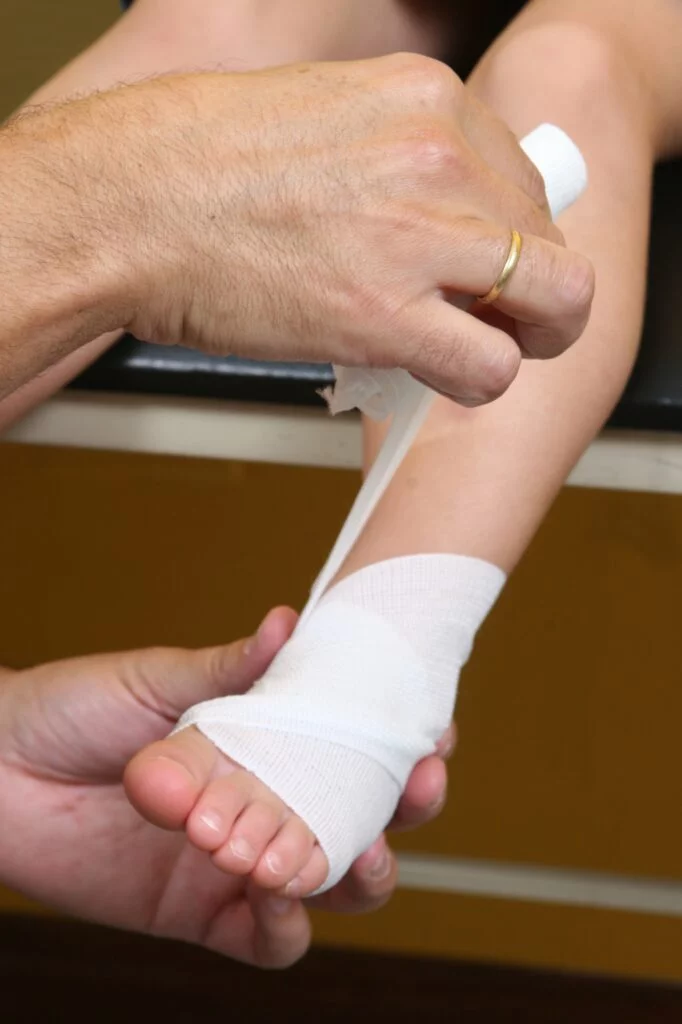Table of Contents
Foot Amputation: Understanding the Procedure, Recovery, and Care
When Is Foot Amputation Necessary?
A podiatrist may recommend foot amputation in cases where:
- Severe infections are unresponsive to antibiotics and debridement.
- Diabetic foot ulcers have led to gangrene or extensive tissue death.
- Trauma or crush injuries have caused irreparable damage to bones and tissues.
- Poor circulation (PAD) has resulted in non-healing wounds and tissue death.
- Cancerous tumors in the foot require removal to prevent further spread.
Types of Foot Amputation
There are different levels of foot amputation depending on the severity and location of the condition:
- Toe Amputation – Removal of one or more toes due to infection or necrosis.
- Partial Foot Amputation – Removal of a portion of the foot, such as the forefoot or midfoot.
- Transmetatarsal Amputation (TMA) – Amputation across the metatarsal bones, preserving the heel and ankle.
- Below-the-Knee Amputation (BKA) – Necessary when the lower leg and foot are severely compromised.
The Foot Amputation Procedure
- Preoperative Evaluation – The podiatrist will assess circulation, infection, and overall health to determine the best surgical approach.
- Anesthesia and Surgery – The affected tissue is carefully removed while preserving as much healthy tissue as possible. The wound is then closed with sutures or left open to heal gradually.
- Post-Surgical Monitoring – Patients are closely monitored for infection, proper healing, and pain management.
Recovery and Rehabilitation
- Hospital Stay – Most patients remain in the hospital for a few days after surgery.
- Wound Care – Proper wound care is essential to prevent infection and ensure healing.
- Physical Therapy – Rehabilitation focuses on strengthening the remaining limb, balance training, and learning to use prosthetics if needed.
- Pain Management – Medications and techniques such as nerve blocks help manage post-surgical pain.
- Lifestyle Adjustments – Supportive footwear, assistive devices, and home modifications may be necessary for mobility and comfort.
Prosthetics and Mobility Options
Preventing the Need for Amputation
While amputation is sometimes unavoidable, proactive foot care can help prevent severe complications, especially for those with diabetes or vascular conditions:
- Regular foot exams by a podiatrist to detect early signs of infection or poor circulation.
- Proper wound care for cuts, blisters, or ulcers to prevent them from worsening.
- Diabetic foot management with blood sugar control, protective footwear, and routine checkups.
- Smoking cessation and healthy lifestyle choices to improve circulation and overall foot health.
Why Choose University Foot & Ankle Institute?
Foot amputation is a life-changing procedure, but with proper medical care, rehabilitation, and support, many patients can regain independence and lead fulfilling lives. If you or a loved one are facing the possibility of foot amputation, contact us to explore treatment options and develop a personalized recovery plan.
At University Foot & Ankle Institute, our board-certified podiatrists offer expert care for treatments like foot amputation. We provide advanced treatment options, from conservative care to surgical solutions, ensuring personalized care for every patient.
Dr. Gina Nalbandian specializes in reconstructive and revisional foot and ankle surgery, foot and ankle trauma, sports medicine, lapiplasty, and limb salvage.
While an undergrad, Gina volunteered at free clinics, hospitals and with the AIDS Project in Los Angeles, all the while exploring various careers in medicine. She also conducted and published her research in the lab on campus. “I soon found out that the lab life wasn’t for me, and I wanted a more hands-on approach to medicine,” she says.
Dr. Nalbandian did her residency at St. Elizabeth’s Medical Center in Boston, which is affiliated with Tufts University. As a resident, she served an academic coordinator and chief resident.
A resident of Sherman Oaks, Gina continues to volunteer her expertise with the Special Olympics, Happy Feet (providing foot care at homeless shelters), and the Boston Marathon.






